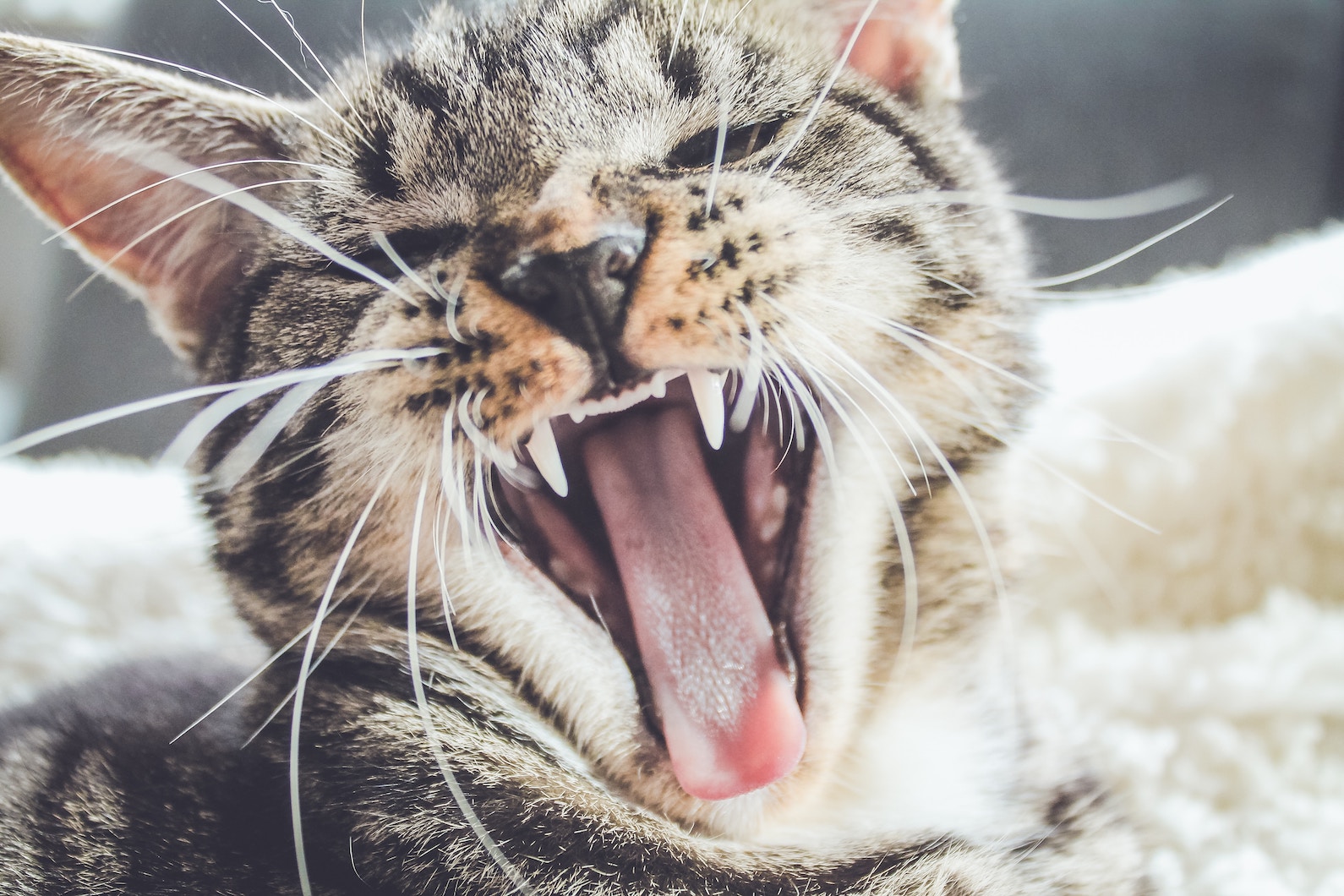As our beloved furry companions age, some cognitive decline is to be expected. But when pets begin to exhibit signs of accelerated cognitive decline, they may have a neurological disorder called cognitive dysfunction syndrome (CDS). How can you tell the difference? And, what does a CDS diagnosis mean for you and your pet? To answer these questions, we learned from Morris Animal Foundation and two cognitive health veterinarians. In an hour-long discussion, Dr. Starr Cameron and Dr. Michael Khan shared cutting edge research about cognitive decline in dogs and cats, plus tips to spot CDS in pets. Whether you want to watch the whole conversation, read our highlights, or do a combination of both, you’re in the right place to improve the lives of your pets as they age.
Morris Animal Foundation is a Denver-based nonprofit that has been funding research to benefit the health of animals for 75 years. To learn more about MAF, read about their biggest achievements in 2022.
Cognitive Health in Dogs and Cats
In this video, you’ll learn everything you ever wanted to know about cognitive health in pets, from common misconceptions about cognitive decline in dogs and cats to the most up-to-date research on CDS. We hope you enjoy it!
Did you know that research on cats is limited compared to research on dogs? Dogs tend to be taken to the vet more often than cats, and cats are really good at hiding their symptoms from their owners. Luckily, this is changing now, as researchers like Dr. Starr Cameron dedicate their professional careers to answering pressing questions about cat health!
What Is Cognitive Dysfunction Syndrome (CDS)?
As pets age, they can develop a neurological disorder that resembles dementia in humans. It’s called CDS and affects 50% of cats 15 and up, and 80% of dogs 17 and up. CDS can significantly impact a pet’s cognitive functions, relationships with others, and overall quality of life.
What Should Pet Owners Look Out For?
It’s normal for your pets to exhibit signs of aging as they get older, but when should you start getting concerned? Using the acronym “DISHAAL,” Dr. Starr Cameron and Dr. Michael Khan outlined the seven signs of CDS and what to look for in your aging pets.
- Disorientation: This usually manifests as your cat being unable to locate their food bowl, or your dog getting stuck in the bathroom or behind a curtain. It’s any indication that your pet is regularly disoriented and confused about where they are.
- Interaction: If you notice a change in the way your pet interacts with family members or other pets in the house, this could be a sign of CDS. For example, if one of your cats is suddenly best friends with the cat that they usually despise, or vice versa.
- Sleep/Wake Cycle: Any changes to your pet’s regular sleep patterns could be a cause for concern. For example, if your dog usually sleeps through the night but now wakes up at 3 am and wanders around the house aimlessly, or if your cat is usually awake at 6 am but now sleeps until the afternoon.
- House Soiling: If your cat is urinating or defecating outside of the litter box, or your dog is peeing on your rug minutes after being let outside, that could be a sign of CDS.
- Activity: Any abrupt changes in activity level could be a sign of CDS. So, a cat that is suddenly sleeping more, or following the owner incessantly around the house, would qualify.
- Anxiety: Any heightened separation anxiety could be a sign of CDS.
- Learning and Memory: Let’s say you move the litter box to a new location. A cat with CDS might struggle to remember where the new litter box is.
Some veterinarians want to add a V for Vocalization to this list. They believe that because 50% of cats with CDS vocalize more than they used to, excessive vocalization could be an indicator of CDS. Those opposed believe that increased vocalization can be linked to other symptoms that are already included in the acronym, namely anxiety or disorientation.
Are There Other Diseases That Can Mimic the Signs of CDS?
Yes, other diseases can look like CDS. For example, chronic kidney disease in cats can cause a cat to use his litter box more frequently, and hyperthyroidism in cats can lead to excessive vocalization, increased hunger, and heightened activity.
Another big one is pain and arthritis. For example, if a cat has arthritis and it is painful for them to climb to the top of their cat tree, this behavior might be mistaken for a change in activity level in the DISHAAL symptoms of CDS.
That’s why it is so important for you to go to see your veterinarian if you suspect that your pet is exhibiting signs of CDS. The vets will perform tests to rule out all other causes for these symptoms, including other illnesses, before confirming a CDS diagnosis.
Preventing Cognitive Decline in Dogs and Cats
As a concerned pet owner, the next question that likely pops into your mind is: How can I avoid this fate for my beloved cat or dog? As Dr. Kelly Diehl, senior director of science communications at Morris Animal Foundation, put it in the webinar, “We can’t give cats [and dogs] Sudoku puzzles.” So what can we do? When it comes to prevention, there are a number of ways to keep your cat’s or dog’s brain healthy.
Keep Your Pet Mentally Engaged
At any age, mental stimulation is key to overall health. It becomes especially important for pets who are unable to do activities that used to stimulate them, like long walks.
- For Dogs: Dr. Khan recommends taking your dog on sniff walks. Processing the smells on a sniff walk takes a lot of brain power and offers excellent stimulation for a dog that is aging.
- For Cats: Introducing new toys, using interactive puzzles, increasing petting and brushing, and creating an environment that promotes exploration can keep their minds active and engaged.
But remember, if a cat or dog is already cognitively impaired, food puzzles or hiding their food in many places can be stressful for them, leading to heightened anxiety and worsened CDS symptoms. Make sure to challenge your pet to a degree that is appropriate for their current cognitive capabilities.
Routine Dental Care
One way to potentially prevent cognitive decline in dogs specifically is to stay on top of their dental hygiene. Some research links a type of bacteria commonly found in gum inflammation in dogs with cognitive decline in dogs. (There is limited research that connects cat dental care with CDS, but again, research in cats is often less funded than dog research.)
Address Chronic Pain Issues
Any kind of chronic pain in pets can lead to disruptions in their sleep/wake cycle, which can be detrimental to their brain health. To prevent CDS, it is important to treat chronic pain as soon as it is detected in your pet.
The Role of Diet and Supplements
Feeding your pets a nutritious diet throughout their lives is essential. For cats, choosing diets that support cognitive health, incorporating Omega-3s, antioxidants, vitamins E, C, B12, L-carnitine, and SAMe can be beneficial. However, always consult your veterinarian before introducing any new diet or supplements.
Remember, cats are not small dogs! If a dietary supplement does not say it is for cats, do not feed it to your cat.
Take Home Message: Pay Attention To Your Pet!
As your pet ages, don’t just assume that every symptom they are experiencing can be attributed to the aging process. Pay attention, and look out for the DISHAAL signs of CDS: disorientation, interaction, sleep/wake cycle, house soiling, activity, anxiety, and learning and memory.
And whatever you do, don’t punish your pet for these new behaviors!
More likely than not, your pet is acting out because they do not know any better, and are dealing with new cognitive impairment, which can be frightening for them. Instead of punishment, try to adapt to their new symptoms, and set them up for success. Here’s to long, happy lives for our fluffy friends!


















